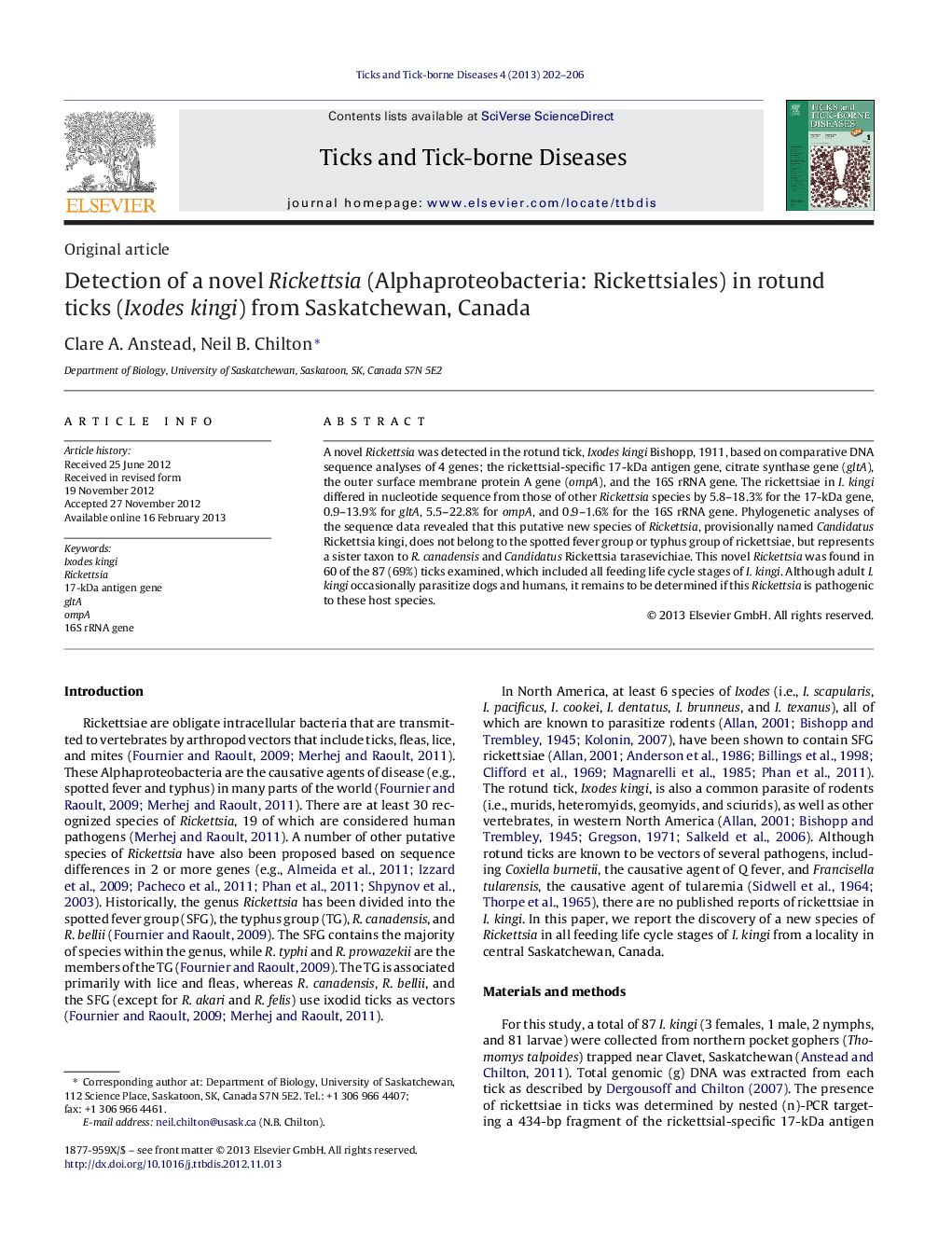| Article ID | Journal | Published Year | Pages | File Type |
|---|---|---|---|---|
| 2474167 | Ticks and Tick-borne Diseases | 2013 | 5 Pages |
A novel Rickettsia was detected in the rotund tick, Ixodes kingi Bishopp, 1911, based on comparative DNA sequence analyses of 4 genes; the rickettsial-specific 17-kDa antigen gene, citrate synthase gene (gltA), the outer surface membrane protein A gene (ompA), and the 16S rRNA gene. The rickettsiae in I. kingi differed in nucleotide sequence from those of other Rickettsia species by 5.8–18.3% for the 17-kDa gene, 0.9–13.9% for gltA, 5.5–22.8% for ompA, and 0.9–1.6% for the 16S rRNA gene. Phylogenetic analyses of the sequence data revealed that this putative new species of Rickettsia, provisionally named Candidatus Rickettsia kingi, does not belong to the spotted fever group or typhus group of rickettsiae, but represents a sister taxon to R. canadensis and Candidatus Rickettsia tarasevichiae. This novel Rickettsia was found in 60 of the 87 (69%) ticks examined, which included all feeding life cycle stages of I. kingi. Although adult I. kingi occasionally parasitize dogs and humans, it remains to be determined if this Rickettsia is pathogenic to these host species.
